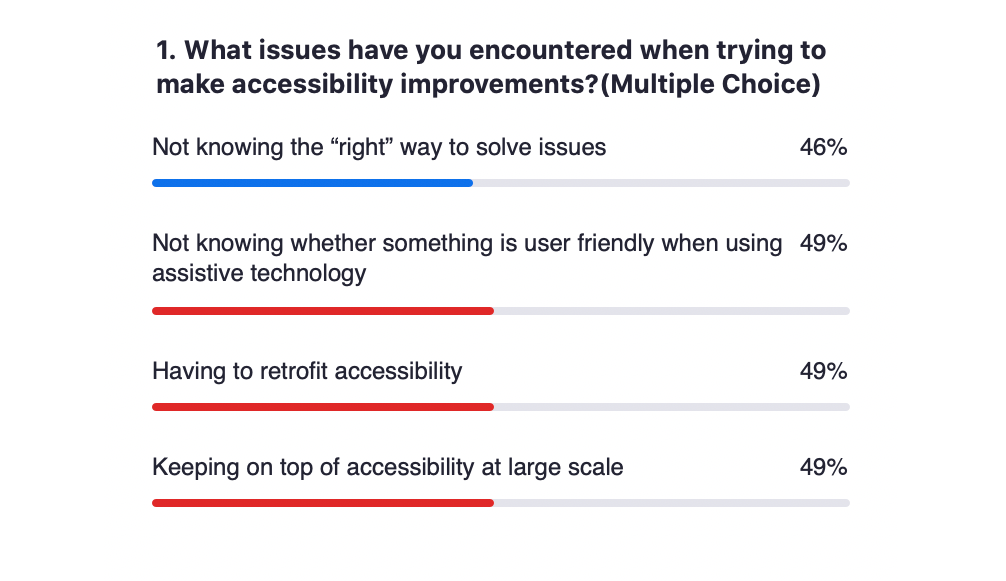What issues hinder addressing accessibility improvements?
Annie Mannion | 20 Aug 2020On our recent webinar on Tuesday 18 August, Dafydd Henke-Reed, Principal Accessibility and Usability Consultant with AbilityNet spoke about Accessibility Anti-Patterns.

In the webinar, attendees were asked to answer a poll question (with multiple choice answers): What issues have you encountered when trying to make accessibility improvements?
- 46% said 'not knowing the right way to solve issues'
- 49% said 'not knowing whether something is user friendly'
- 49% said 'having to retrofit accessibility' (to add new technology to an older system)
- 49% say 'keeping on top of accessibility at large scale'.

These responses indicate significant gaps in accessibility knowledge, and highlight a broad need for better understanding of how to address digital accessibility issues, both at the start of a project or product development, and also when trying to fix identified accessibility issues.
Watch the webinar playback for key accessibility tips
After responding to the poll, attendees went on to learn from Dafydd's expert advice about ways they can avoid falling into traps when making accessibility improvements.
Dafydd explained more about:
- Kitchen sink accessibility
- Behind-the-scenes accessibility
- The risks of bolt-on accessibility
- Exclusionary accessibility
This was a great @AbilityNet session from @o_dafydd. My highlight as showing details for screen-readers that had not been translated on a bilingual website. Really interesting and could have gone on for double the length. https://t.co/lRmGfvOgBq
— Matthew Deeprose (@VLEguru) August 18, 2020
Watch the captioned webinar recording (below) to pick up valuable tips. You can also access the slides and follow-up Q&As from the session.
The recording and transcript also contain a 10 per cent discount code which can be applied to our online training courses - we have value-for-money courses designed to meet the needs of different digital roles, perfect for upskilling your team.
Further resources
- Find out more about AbilityNet's free live webinar events. Coming up 8 September: Accessibility Insights with Paul Smyth of Barclays
- Podcast: Accessibility Insights with Neil Milliken
- Webinar playback: Accessible design tips for a competitive edge: AbilityNet Live!
- Accessibility training: courses available for various digital roles
AbilityNet provides a range of free services to help disabled people and older people. If you can afford it, please donate to help us support older and disabled people through technology



